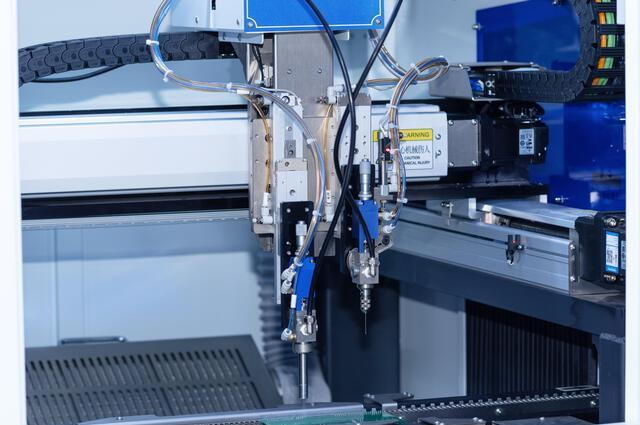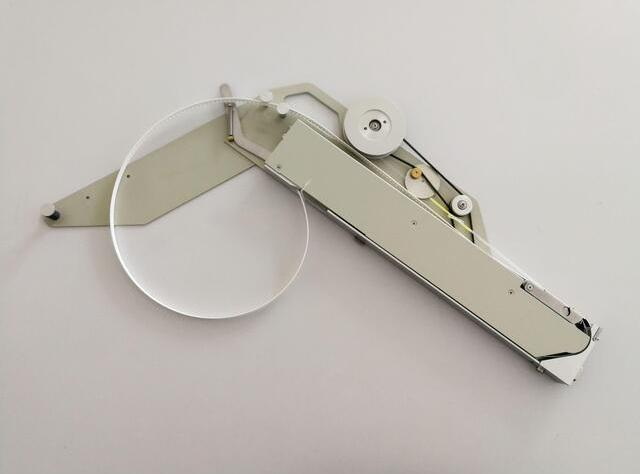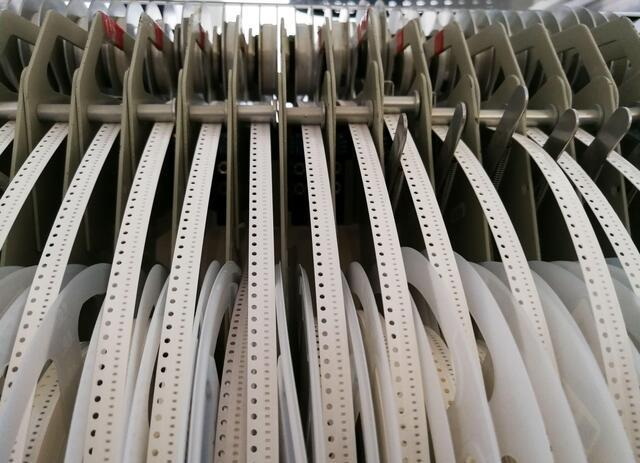Content Menu
● Understanding SMT Production
● Key Steps in Setting Up an SMT Production Line
>> 1. Planning and Preparation
>> 2. Choosing the Right Equipment
>> 3. Designing the Layout
>> 4. Setting Up Equipment
>> 5. Testing and Calibration
● Essential Considerations for a Successful SMT Line
>> Environmental Control
>> Quality Control
● Enhancing Efficiency in Your SMT Production Line
>> Automation
>> Lean Manufacturing Principles
>> Continuous Training
>> Regular Maintenance
● Conclusion
● FAQ
>> 1. What is an SMT production line?
>> 2. How much does it cost to set up a small SMT line?
>> 3. What are the key machines needed for an SMT line?
>> 4. How do I ensure quality control in my SMT production line?
>> 5. What factors should I consider when choosing equipment for my SMT line?
● Citations:
Setting up a small Surface Mount Technology (SMT) production line can be a rewarding venture for electronics manufacturers, hobbyists, or startups looking to produce printed circuit boards (PCBs) efficiently. This guide provides a comprehensive overview of the essential steps, equipment, and considerations needed to establish a functional SMT production line.

Understanding SMT Production
Surface Mount Technology (SMT) is a method used to mount electronic components directly onto the surface of PCBs. The process is widely adopted due to its efficiency, compactness, and ability to automate assembly, making it ideal for high-volume production.
Key Steps in Setting Up an SMT Production Line
1. Planning and Preparation
Before diving into purchasing equipment or setting up the workspace, careful planning is crucial. This involves:
- Assessing Production Requirements: Determine the expected volume of production, types of components, and complexity of assemblies. Understanding these factors will guide your decisions regarding equipment selection and layout design.
- Budgeting: Establish a budget that covers equipment costs, facility setup, operational expenses, and raw materials. For small to medium-scale operations, initial budgets typically range from $50,000 to $130,000.
- Market Research: Conduct thorough research on market demand for your products. Understanding customer needs and trends can help you tailor your production line accordingly.
2. Choosing the Right Equipment
Selecting appropriate equipment is vital for the efficiency of your SMT line. Key pieces of equipment include:
- Solder Paste Printer: This machine applies solder paste onto the PCB pads where components will be placed. Options vary from semi-automatic to fully automatic printers. Choose one that offers precision and consistency.
- Pick-and-Place Machine: This is crucial for accurately placing components onto the PCB. Look for machines that can handle various component sizes and types with high speed and precision.
- Reflow Oven: The reflow oven melts the solder paste to permanently attach components to the PCB. Consider ovens with good temperature profiling capabilities for optimal solder joint quality.
- Inspection Systems: Automated Optical Inspection (AOI) systems can detect defects in component placement and solder joints, ensuring quality control. Some setups may also include X-ray inspection systems for enhanced reliability.
- Conveyor Systems: These systems transport PCBs between different stages of the assembly process smoothly.
3. Designing the Layout
The layout of your SMT line should maximize efficiency and minimize bottlenecks. Considerations include:
- Flow of Materials: Arrange equipment in a logical sequence that follows the production process: solder paste printing → component placement → reflow soldering → inspection.
- Space Management: Ensure adequate spacing between machines for maintenance and troubleshooting.
- Future Expansion: Design your layout with potential future expansions in mind. This flexibility can save costs later on as production needs grow.
4. Setting Up Equipment
Once you have selected your equipment and designed your layout, it's time to set up:
- Installation: Follow manufacturer instructions carefully for each piece of equipment. Ensure all connections are secure and that machines are calibrated correctly.
- Software Configuration: Most modern SMT machines come with software for controlling operations. Configure settings according to your production requirements, including component libraries and placement coordinates.
- Integration: Ensure that communication between machines is properly established for seamless operation. This may involve setting up network connections and configuring data exchange protocols.
5. Testing and Calibration
After setup, thorough testing is essential:
- Conduct initial tests using test boards to verify that all equipment functions correctly.
- Pay attention to critical parameters such as component placement accuracy and solder joint quality.

Essential Considerations for a Successful SMT Line
Environmental Control
Maintaining optimal conditions in your production environment is crucial:
- Implement Electrostatic Discharge (ESD) protection measures to safeguard sensitive components.
- Ensure proper temperature and humidity levels are maintained within the facility.
Quality Control
Establish robust quality control measures throughout the production process:
- Regularly inspect PCBs at various stages using AOI systems.
- Implement functional testing after assembly to ensure all electronic functions operate correctly.
Enhancing Efficiency in Your SMT Production Line
To ensure that your SMT production line operates at peak efficiency, consider implementing the following strategies:
Automation
Automating various aspects of the manufacturing process can significantly enhance efficiency by reducing labor costs and minimizing human error. Automated systems can handle tasks such as material handling, inspection, and even some aspects of assembly itself.
Lean Manufacturing Principles
Applying lean manufacturing principles helps identify waste in processes and optimize workflows. Techniques such as value stream mapping can help visualize processes and highlight areas needing improvement.
Continuous Training
Investing in staff training ensures that operators are skilled in using new technologies and following best practices in SMT assembly. Regular training sessions can help maintain high quality standards while also boosting morale among employees.
Regular Maintenance
Establish a maintenance schedule for all equipment to prevent unexpected breakdowns that could halt production. Regular checks can extend the lifespan of machinery and maintain optimal performance levels.
Conclusion
Setting up a small SMT production line involves meticulous planning, careful selection of equipment, efficient layout design, rigorous testing protocols, and continuous improvement practices. By following these guidelines, you can create an efficient assembly line capable of producing high-quality PCBs that meet market demands.
Investing time in understanding each component's role within the SMT process will lead to smoother operations and better product outcomes in your manufacturing endeavors.

FAQ
1. What is an SMT production line?
An SMT production line is an automated assembly line used for mounting surface mount devices (SMDs) onto printed circuit boards (PCBs). It typically includes machines for solder paste printing, component placement, reflow soldering, and inspection processes.
2. How much does it cost to set up a small SMT line?
The cost can vary widely based on equipment choices and production scale but generally ranges from $50,000 to $130,000 for small to medium-scale operations.
3. What are the key machines needed for an SMT line?
Essential machines include a solder paste printer, pick-and-place machine, reflow oven, inspection systems (like AOI), and conveyor systems for transporting PCBs through different assembly stages.
4. How do I ensure quality control in my SMT production line?
Implement regular inspections using AOI systems at various stages of production and conduct functional testing on completed assemblies to verify performance.
5. What factors should I consider when choosing equipment for my SMT line?
Consider factors such as compatibility with future expansions, performance specifications (speed and precision), after-sales support from manufacturers, and compliance with industry standards when selecting equipment for your SMT line.
Citations:
[1] https://www.smtfactory.com/Essential-Steps-for-SMT-Production-Line-Setup-id49117676.html
[2] https://faroads.com/start-smt-line-guide-2024/
[3] https://www.mainpcba.com/smt-line-a-complete-guide-on-surface-mount-technology-line/
[4] https://faroads.com/smt-line/
[5] https://www.smtfactory.com/Expert-Guidance-for-SMT-Production-Line-Setup-id42117676.html
[6] https://www.wevolver.com/article/smt-process
[7] https://www.smtfactory.com/Strategic-SMT-Production-Line-Layout-Design-id40117676.html
[8] https://www.adoptsmt.com/en/efficiency-enhancement-in-smt-manufacturing/
[9] https://www.viasion.com/blog/smt-manufacturing-process-step-by-step-guide/
[10] https://www.electronicspecifier.com/news/surface-mount-technology-best-practice-guide




















